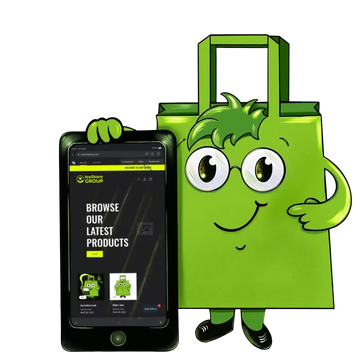Why Inside Sales Are Becoming a Key Tool for Shopify Stores?
If you own an online store on Shopify or Shopify Plus, especially if your market is the US or Europe, you already know that traffic and conversion are just the beginning. To truly scale your business, it’s important not only to attract customers but also to interact with them effectively.
One of the most powerful, yet underutilized growth channels is inside sales . This isn’t just about phone calls and email campaigns—it’s a strategic approach to building long-term relationships with clients, increasing average order value, and boosting loyalty.
What Are Inside Sales?
Inside sales refer to the process of engaging with customers remotely. Sales representatives work from an office or remotely, using phones, emails, messengers, and CRM systems to establish contact, overcome objections, and close deals.
Benefits of Inside Sales:
1. Cost-Effective and Scalable
The inside sales model is highly profitable and flexible. It allows for a personalized approach to each client while reaching both national and international audiences—without the need to open additional offices or travel. This makes it especially attractive for e-commerce businesses like Shopify stores aiming to expand into markets such as the US and Europe.
2. Full Control and Team Development
One of the key advantages of inside sales is the ability to record calls and analyze them. This gives managers valuable insights into how sales reps are performing. Based on this data, you can monitor communication quality, train employees, discuss difficult situations, and develop effective interaction tactics. Regular team brainstorming helps implement best practices and improve overall sales performance.
3. High Level of Specialization
Inside sales allow you to assign deals based on expertise rather than geography. You can match clients with the salesperson who knows their niche, product, or industry best. This increases the chances of closing the deal successfully and enhances customer satisfaction.
Inside Sales vs. Outside Sales: What's the Difference?
| Inside Sales | Outside Sales |
|---|---|
| Remote communication | In-person meetings & visits |
| Ideal for digital businesses | Suited for complex offline deals |
| Fast, scalable, automatable | Limited scalability |
| CRM- and chat-based sales | Event- or venue-driven |
7 Inside Sales Strategies
1. Know Your Product Inside and Out
Inside sales reps don’t have the luxury of showing the product in person, so their expertise must be evident from the very first minutes of the conversation. That means knowing not only the technical specs of your product but also understanding how it solves specific client problems in their industry.
Example:
You run a Shopify store selling organic cosmetics wholesale. A potential client is a spa chain owner considering your brand as a new supplier.
To make an impression, it’s not enough to talk about cream ingredients or certifications. You should show you understand their business:
- How often do they need to restock?
- What packaging requirements do spas have?
- Which allergens should be avoided in skincare products?
- Which ingredients are particularly valued in the beauty industry?
If you not only know your product’s benefits but can explain how it fits into the client’s operations, you become not just a vendor but a trusted partner offering tailored solutions.
2. Listen Carefully and Engage in Dialogue
Successful sellers aren’t the ones who talk the most—they’re the ones who listen well. Without face-to-face interaction, it’s especially important to pick up on verbal cues, understand hidden needs, and respond appropriately.
Ask open-ended questions, let the client speak freely, and take notes during the conversation.
Example:
You're speaking with a pet product store owner interested in dropshipping. He mentions, “Right now, I’m spending a lot of time managing logistics.”
Active seller will catch this signal and ask follow-up questions:
- "What are the main challenges with your current delivery system?"
- "Are you using third-party services to automate orders?"
- "Would it help if we could provide API integration with your Shopify store?"
This kind of attention builds trust and increases the likelihood of closing the deal.
3. Prepare Flexible Responses to Common Objections
Sales conversations always include common objections: “Too expensive,” “I need to think about it,” “I’m already working with another supplier.” Don’t lose confidence—prepare thoughtful, natural responses in advance.
Examples:
- Price: “I understand budget is important. Can I ask what range you're considering? We may be able to offer an optimal solution.”
- The decision is made by another person: “That’s perfectly fine. What questions might the decision-maker have? I’d be happy to prepare materials or join the discussion.”
- Competito: “Great that you're working with a trusted provider. Are there any areas where you feel they could improve?”
Having ready answers keeps the conversation moving forward and maintains control of the dialogue.
4. Offer Product Samples
If you sell physical goods, sending samples or trial products can be the deciding factor for a client. This works especially well in fashion, beauty, furniture, textiles, and B2B niches.
For example, sending fabric swatches lets clients feel the quality firsthand. For SaaS products, offering a free trial period is ideal.
Most importantly, make sample sending part of your sales strategy—not just a one-time gesture. After sending a sample, follow up with the client to discuss their impressions and continue the conversation.
5. Use Customer Stories as Marketing Tools
Real client stories are among the most effective ways to build trust—but only when they’re relevant. Share case studies about companies with similar problems, business sizes, or industry-specific needs.
Create a library of detailed success stories with measurable results.
Example:
Your Shopify store sells high-tech fitness equipment. You want to attract a small private gym owner.
One of your existing clients—a fitness center at X place—increased foot traffic by 40% after implementing your equipment and workout management software.
Create a detailed case study:
- Client Name: “Fitness Club Y”
- Problem: Low member engagement, lack of digital features
- Solution: Equipment installation + Shopify Plus integration for online membership and personalized training programs
- Result: 40% increase in attendance, 25% higher average order value
This becomes part of your communication with new prospects. You show you’ve helped similar businesses—and can do the same for them.
6. Don’t Give Up—Follow Up (But Avoid Pressure)
Most big deals require multiple contacts. Prospects may need time to consult their team, review budgets, or simply think things over. That’s why follow-up is one of the most critical parts of inside sales.
However, balance persistence with tact. Approach follow-ups as continued service, not reminders. Provide value: additional resources, answers to past questions, or even new ideas on how your product can solve their problem.
Key follow-up points:
- After the first call — thank-you note summarizing the conversation
- After a demo — supporting materials and clarification of next steps
- After submitting a proposal — check-in on feedback or concerns
- If no response — polite follow-up with a small update or news
7. Analyze Calls — Learn from Every Conversation
Recording and analyzing phone calls is a powerful tool for sales team development. It helps identify strengths and weaknesses, find improvement opportunities, and learn from successful interactions.
Use platforms like Gong or Aircall for automated analysis. Track KPIs: number of meetings, frequency of objections, communication style. Review both successful and unsuccessful calls with your team.
This practice improves communication culture and sets clear standards for client interaction.
Tools to Support Inside Sales
| Category | Tools | Features & Benefits |
|---|---|---|
| Video Conferencing | Zoom | – Conduct meetings and product demos – Record sessions – Screen sharing – CRM integrations |
| Call Tracking | CallRail, Salestrail | – Call analytics – Real-time transcription – Keyword and tone tracking – Improve communication quality and training |
| CRM (Customer Relationship Management) | Salesforce, HubSpot | – Manage contacts and deals – Automate workflows (follow-up scripts, email sequences) – AI lead scoring – Sales forecasting and funnel analytics |
| Scheduling Tools | Calendly | – Automated meeting booking – CRM integration – Pre-meeting question forms – Reduces back-and-forth communication |
| Call Transcription & Analysis | Fireflies.ai, Rev | – Automatic call transcription – Search by keywords – Tone and key moment analysis – Useful for training and performance evaluation |
| Social Media Monitoring | Sprout Social, Brand24 | – Track brand mentions and competitor activity – Identify buying signals – Discover new leads and engage at the right time |
| Communication Platforms | Slack (including Slack Connect) | – Internal team communication – Sharing client info and deal updates – Client collaboration via shared channels – Speeds up coordination in complex deals |
Why IceStoreGroup Is Your Trusted Shopify Partner
We specialize in building Shopify and Shopify Plus stores, custom development, and integrating advanced automation solutions for sales.
Our clients receive:
- Custom solutions tailored to specific goals
- Flexible approach and fast implementation
- Full support from store creation to scaling
- Deep expertise in Shopify and Shopify Plus
Contact us today!
If you want to implement an effective inside sales system, boost conversions, and automate processes—we can help.
Our experience and technology will help your business grow faster and smarter.
Let’s build something great together
📧 Email: info@icestoregroup.com
🌐 Website: https://icestoregroup.com
📱 Telegram: https://t.me/icestoregroupshopify
🔔 Follow our Telegram channel: https://t.me/icestoregroup
IceStoreGroup — Your Team to Reach New Heights in E-Commerce!
🔥 7-Day Free Trial 🔥
Experience IceStoreLab in action:
✅ Daily reports via Telegram and Email
✅ Competitor change history
✅ AI recommendations and visual reports
See for yourself how data turns into actionable decisions.
👉 Start your free trial now

